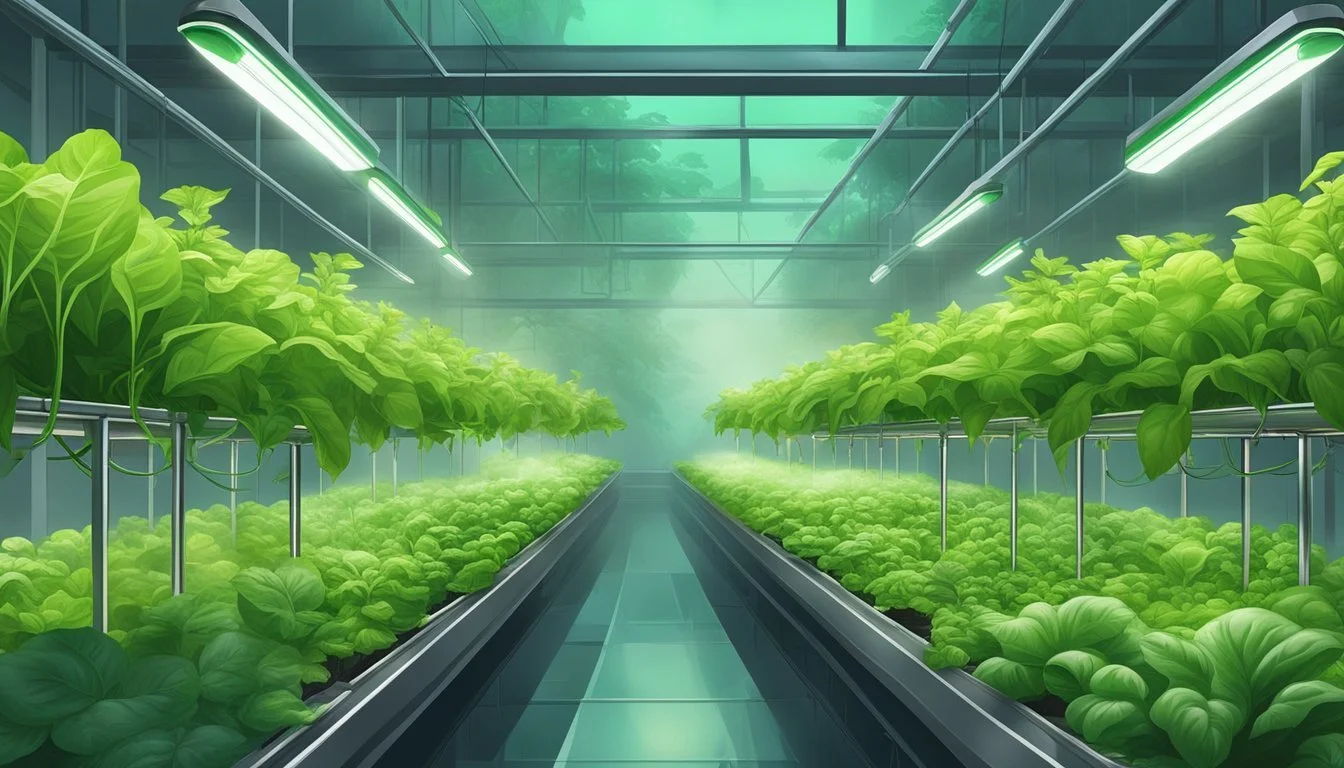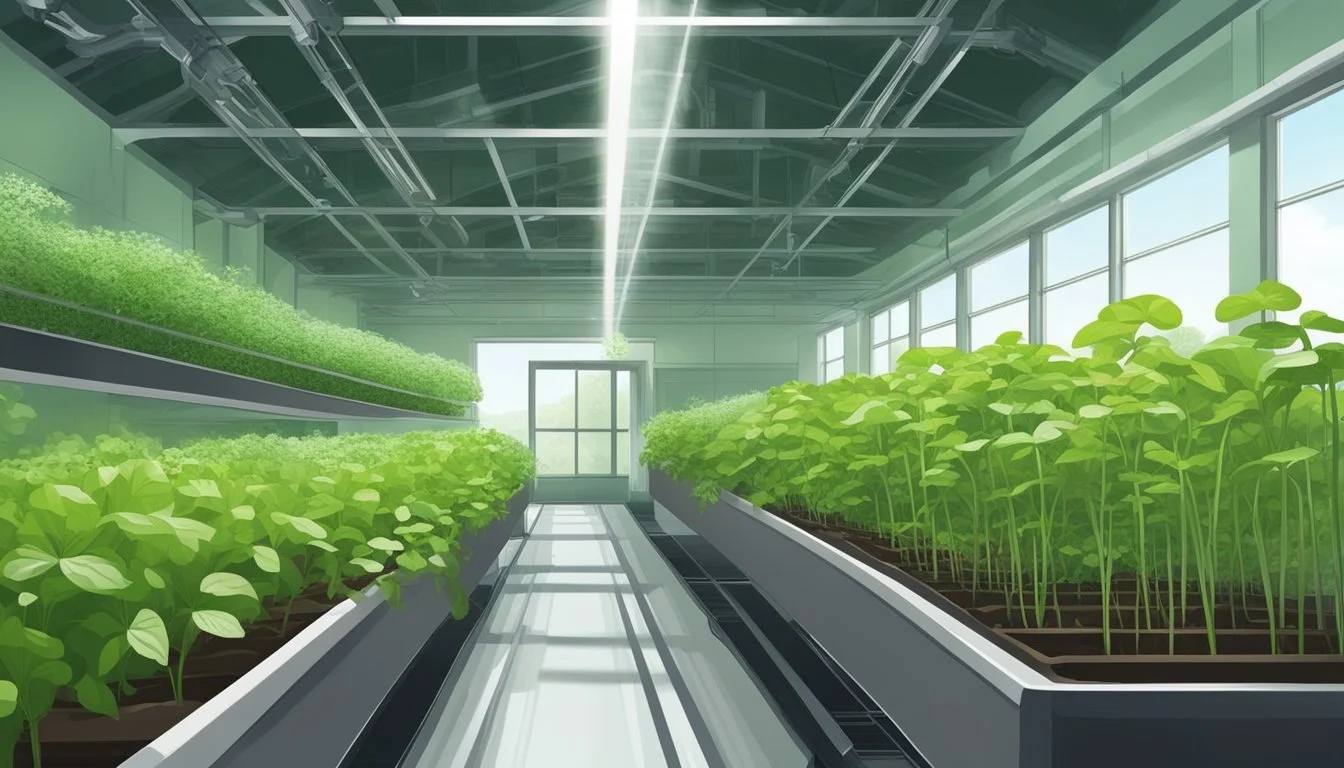Maximizing Plant Growth with a Hydroponic System
Key Strategies for Homesteaders
Hydroponics, the method of cultivating plants without soil, harnesses a nutrient-rich water solution to meet the growth requirements of plants. It is an increasingly popular technique in homesteading, where self-sufficiency is key. In hydroponic systems, nutrients are delivered directly to plants' roots in a highly soluble form, allowing them to absorb what they need with greater efficiency than in traditional farming. This method facilitates faster plant growth, potentially increasing yield while conserving resources, making it a sustainable option for modern homesteaders.
The space-saving nature of hydroponic systems is one of their most significant benefits. With vertical farming arrangements, even homesteaders with limited land can implement this technology. This efficiency is a boon for urban homesteaders or those looking to maximize production within small areas. By enabling year-round cultivation independent of external climate conditions, hydroponics offers a reliable method to produce food continuously, further contributing to the sustainability of homestead operations.
Efficiency in hydroponics extends beyond space utilization. Water use in hydroponic systems is greatly reduced compared to soil-based agriculture, as the contained environment minimizes evaporation and run-off, allowing for water to be recycled within the system. This not only results in a lower ecological footprint but also reduces the overall operating costs of the homesteading venture. Through these attributes, hydroponics stands as a testament to agriculture's innovative future, offering a path toward more sustainable and efficient food production methodologies.
Understanding Hydroponics
Hydroponic gardening is a soilless cultivation system that uses nutrient solutions to nourish plants, with various methods available to suit different plants and environments.
Fundamentals of Hydroponic Systems
Hydroponics is based on the premise that plants can grow without soil, as long as they have access to a nutrient solution that supplies essential elements needed for growth. In this system, a growing medium such as rockwool, clay pellets, or perlite supports the plant roots and aids in the distribution of the nutrient solution. Over time, the nutrient solution is either recirculated or replaced to maintain the appropriate nutrient levels for optimal plant growth.
Different Types of Hydroponic Systems
Nutrient Film Technique (NFT): This continuous flow system involves a thin film of nutrient solution flowing over the roots of plants set in channels. It is efficient in its use of water and nutrients.
Ebb and Flow: This system floods the growing area with a nutrient solution at regular intervals, which then drains back, pulling oxygen to the roots and promoting healthy growth.
Deep Water Culture (DWC): Plants are suspended in nutrient-rich oxygenated water, which stimulates rapid root development and growth.
Wick System: The simplest type of hydroponic system, it uses a wick to draw the nutrient solution from a reservoir into the growing medium.
Aeroponic System: A more advanced system, plants hang in the air and are misted with nutrient solution, maximizing oxygen exposure and promoting robust root systems.
Setting Up Your Hydroponic System
When venturing into hydroponic gardening, it's imperative to select appropriate equipment, growth mediums, and nutrient solutions. Equally crucial is understanding the nuances of plant support and maintenance for robust growth.
Choosing the Right Hydroponic Equipment
In a controlled environment, one has the luxury to tailor the temperature and lighting to the plants' needs, which is essential for optimal growth. Different hydroponic systems, such as the Nutrient Film Technique (NFT), flood and drain system, or vertical gardening setups, serve various needs and spaces:
NFT Systems: these utilize shallow channels where a thin film of nutrient solution flows, providing roots with constant water and nutrients.
Flood and Drain Systems: ideal for water conservation as they periodically flood the plant roots with a solution which then drains back.
Vertical Gardens: maximize space efficiency by stacking plants vertically, often incorporating a drip or tray system.
Water pumps and timers are critical for automating water and nutrient delivery, ensuring consistent care even when the gardener is away. Lighting systems must mimic the spectrum of sunlight as closely as possible to ensure adequate photosynthesis without overheating or stressing the plants.
Growing Media and Nutrient Solutions
Hydroponic systems don't use soil but instead rely on inert growing media such as rockwool, vermiculite, perlite, or coco coir to support root development. These materials are:
Sterile, preventing disease.
Capable of retaining moisture and oxygen, crucial for healthy roots.
A nutrient-rich solution that is balanced with essential macro and micronutrients is pivotal. This liquid fertilizer must be pH-adjusted and changed regularly to maintain optimal water quality.
Plant Support and Maintenance
Ongoing maintenance in a hydroponic garden involves:
Pruning: removing dead or overgrown foliage to facilitate better air circulation and light penetration.
Humidity and Temperature Control: monitoring with precision to prevent plant stress.
Oxygenation: ensuring that an air pump sufficiently aerates the nutrient solution to prevent root rot and encourage vigorous root growth.
Advanced systems may employ sensors and automated systems to manage these functions, keeping the environment stable with minimal manual intervention. Understanding these systems' interplay is crucial for any hydroponic gardener's success.
Managing the Hydroponic Environment
Effective management of the hydroponic environment is crucial for homesteaders seeking to harness the benefits of soilless agriculture. Close attention to temperature, humidity, nutrient balance, lighting, and air circulation is essential to promote optimal plant growth and yield.
Temperature and Humidity Control
The temperature and humidity within a hydroponic setup must be closely regulated to ensure plants can thrive. Optimal temperature ranges typically fall between 65-80°F (18-27°C), while humidity levels should be maintained at 40-60% for most crops. Homesteaders can use a combination of heaters, coolers, and dehumidifiers to maintain these consistent conditions. Furthermore, water conservation strategies like reusing water within the system can help stabilize temperature and humidity levels.
Nutrient Delivery and pH Balance
Nutrients are delivered directly to plant roots via a nutrient-rich water solution, often with the nutrient film technique. This delivery system must supply an even balance of essential nutrients to promote plant uptake and growth. Equally important is monitoring and maintaining a pH range of 5.5-6.5 to ensure nutrient availability and prevent clogs or nutrient imbalances. Homesteaders must regularly test the water with a pH meter and manage it by adding acid or base solutions when necessary.
pH Levels:
Ideal: 5.5-6.5
Check: Regularly with a pH meter
Adjust: With acid/base solutions
Nutrient Delivery:
Technique: Nutrient Film Technique
Balance: Equal distribution to avoid nutrient imbalances
Lighting and Air Circulation
Lighting is crucial for photosynthesis, the process through which plants produce energy. LED grow lights are a popular choice for indoor hydroponic systems, providing a full spectrum of light in an energy-efficient manner. The lights should be positioned to evenly cover the plant canopy and managed to mimic natural sunlight patterns. Effective air circulation is facilitated by fans, which help prevent disease and ensure consistent conditions. Airflow aids in preventing stagnation and boosts efficient use of water by helping with evaporation and nutrient uptake.
Lighting:
Type: LED grow lights
Pattern: Mimic natural sunlight
Air Circulation:
Fans: Prevent disease and promotes consistent conditions
Benefit: Improves water efficiency and nutrient uptake
Maximizing Yield in Hydroponic Systems
In the pursuit of sustainable agriculture and year-round cultivation, hydroponic systems present a viable method for achieving higher yields. By precisely managing essential nutrients and implementing strategic growth techniques, gardeners can cultivate larger plants with faster growth rates, while ensuring the efficient use of water.
Optimizing Nutrient Solutions for Growth
Essential Nutrients:
Nutrient: Nitrogen (N); Role in Plant Growth: Leaf and stem growth; Ideal Concentration Range: 150-250 ppm
Nutrient: Phosphorus (P); Role in Plant Growth: Root development and flowering; Ideal Concentration Range: 30-90 ppm
Nutrient: Potassium (K); Role in Plant Growth: Overall health and disease resistance; Ideal Concentration Range: 200-400 ppm
Nutrient: Calcium (Ca); Role in Plant Growth: Cell integrity and growth; Ideal Concentration Range: 150-200 ppm
Nutrient: Magnesium (Mg); Role in Plant Growth: Chlorophyll production; Ideal Concentration Range: 50-100 ppm
Optimal plant growth requires a balanced solution of essential nutrients, which includes both macronutrients like nitrogen, phosphorus, and potassium (NPK) as well as crucial micronutrients. Adjusting the pH level between 5.5 and 6.5 ensures these nutrients are readily available for plant uptake, fostering robust plant development.
Micronutrients:
Include micronutrients such as iron, manganese, and zinc to support various plant functions.
Maintain ratios to prevent nutrient imbalances, which can impede plant growth and yield.
Strategies for Higher Yields
Achieving higher yields in hydroponic systems requires more than just optimal nutrient management. The following strategies are critical:
Lighting: Provide ample lighting with the correct spectrum to encourage photosynthesis.
Vegetative Stage: Use blue spectrum light for strong, leafy growth.
Flowering Stage: Shift to red spectrum to stimulate flowering and fruiting.
Temperature Control: Maintain consistent temperatures tailored to the plant species to avoid stress, which can hinder yields.
Air Circulation: Ensure good air circulation around plants to prevent disease and provide a steady supply of CO₂ for photosynthesis.
Pruning and Training: Regularly prune and train plants to maximize energy distribution, focusing on fruitful parts for better yield.
Implementing these strategies in a hydroponic setup contributes to larger plants with faster growth rates, while promoting an efficient use of water and nurturance of sustainable agricultural practises.
Common Challenges and Solutions
When embarking on a journey with hydroponic gardening, homesteaders may encounter a few common obstacles. With a proactive approach and well-informed strategies, these challenges can be deftly managed for optimal plant growth.
Preventing and Addressing System Clogs
Clogs in hydroponic systems are typically due to debris build-up or sediment from the growing media. Coconut coir, while advantageous for root support, can sometimes contribute to these blockages. To prevent clogs:
Regularly inspect and clean all water pumps and drip systems.
Filter out debris before it enters the system, ensuring only clean water circulates through.
Periodically flush the system with a cleansing solution, such as hydrogen peroxide, to remove any potential impediments.
Adjusting for Specific Plant Requirements
Different plants have unique nutritional and environmental needs that must be carefully balanced. Lettuce, leafy greens, and herbs often thrive in hydroponic systems but require attention to detail:
Monitor and adjust pH levels to the specific range most suitable for the plant type (typically between 5.5 and 6.5).
Ensure that the temperature and lighting are optimized per the plants' requirements to avoid growth inhibition.
Water Quality and Nutrient Management
Maintaining optimal water quality is crucial for a successful hydroponic system. Essential elements must be available in appropriate concentrations to foster healthy plant development. To manage water quality:
Test water regularly for impurities and contaminants which can cause toxicity or deficiencies in plants.
Manage nutrients by maintaining correct dosages of essential elements, ensuring the plants receive a balanced diet for robust growth.
By adhering to these solutions, homesteaders can maximize the potential of their hydroponic gardens, ensuring healthy and bountiful harvests.



